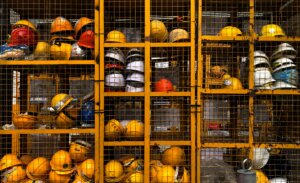Achieving ISO 9001 Certification within an Architecture Practice
Welcome to this week’s blog post from LHConsulting where we will discuss how to achieve ISO 9001 within an architecture practice. This topic can seem quite daunting. Especially if you have not come across it before. However, do not worry as my intention is to clear everything up in this short post.
So, grab a coffee, pen and paper and enjoy the post.
Here we go…
Are you an architecture practice being asked to get ISO 9001 certification? Do you want to systemise your everyday activities?
Are you unsure how to do this?
Then you have come to the right place! This post is one of many in October which will be focussing upon Architecture in relation to management systems.
What is ISO 9001?
However, before we start, I can hear you all screaming ‘What is ISO 9001 Luke?’. Well seeing as you asked, I will try my best to explain…
ISO 9001 is the internationally recognised standard for Quality Management Systems (QMS). Designed to be a business tool for continual improvement ISO 9001 can help you to achieve the following:
- Streamline operations and reduce costs
- Win more business and compete better in tenders
- Better monitor customer perceptions of your business
- Formalise procedures such as – Design reviews, maintenance of competency / cpd records, data backup and drawing control
I agree that this is a very simple explanation of ISO 9001. However, I do not want to deviate too much from the topic of this blog.
So now that we are all on the same page let us get into it…
If you prefer to watch and listen, I have created a short video which can be viewed below…
Step One – Implement a Quality Management System (QMS)
So, the first step in any architecture practices journey is to implement a bespoke QMS which has been written in accordance with the requirements of the standard. Although they vary quite a bit, typically a quality management system comprises of the following documentation…
- Quality policy manual
- Quality policy statement
- Documented procedures – Design and development, tendering, office maintenance, training and complaints management
- Key quality documents – Design review template, CPD record and training matrices
If you know how to implement one of these then that is great! However, this is the reason why companies will then employ the support of an external consultancy – Such as LHConsulting to help them implement their QMS. In addition to this they can also take you through to certification and beyond!
Step Two – Audit your Quality Management System
Once you have implemented your QMS the next stage is to ensure that it meets the requirements of ISO 9001. The most effective way to achieve this is through a comprehensive quality audit which tests documentation such as…
- Quality Management System
- Management Review – A formal meeting held on a periodic basis to test your management systems performance
- Training Documents – CPD logs, training matrices, certificates, appraisals and toolbox talks
- Complaints Records – Supplier, internal and customer issues
- Customer Satisfaction Documentation
To carry out the audit you can either employ an external consultancy or do it yourself. However, if you are going to carry it out in-house you may want to train that member of staff in ISO 9001 internal auditing.
For information on ISO 9001 internal auditing and training courses get in touch and I can give you some recommendations.
Step Three – Conduct a Management Review Meeting within your Architecture Practice
One of the final steps before you book an ISO 9001 assessment is to conduct a management review meeting within your practice. This should involve top management and includes the following agenda topics…
- Quality Objectives
- Customer Satisfaction Rates
- Complaints
- Effectiveness of the QMS
To carry out the management review meeting you can either employ an external consultancy or do it yourself. However, if you are going to carry it out in-house you need to ensure you follow the agenda set within the ISO 9001:2015 standard.
If you do not have a copy then Get in touch and I can point you in the right direction.
Step Four – Pass your ISO Assessment
The final stage is to pass your ISO assessment.
That simple huh?
Well you will need to make sure that your QMS is up to date, well resourced and that your activities are smooth and traceable throughout. Once this is done you can select a certification body to conduct the assessment. I would recommend going out to a few UKAS accredited certification bodies so that you get the best value for money. The reason for this is that prices can vary slightly from one certification body to another.
The initial certification process is split into two parts as follows…
- Stage One – This is usually more of a desktop review to assess whether your company have all the key documentation in place as required by ISO 9001. It will be more focussed upon documentation rather than your everyday activities.
- Stage Two – This is more focussed upon your operational activities rather than documentation and may involve the auditor reviewing your sales, purchasing, manufacturing and after sales processes.
If you pass the above assessments without any major problems, then you will then be awarded an ISO 9001 certificate.
I really hope this post helped!
LHConsulting is an ISO Management Systems and Legislation Support Consultancy based in the West Midlands. We support businesses and individuals to make compliance easy. All of our services cover the breadth of the UK and we work with all types of businesses including those based in small towns and major cities including London, Birmingham and Manchester. We also have a range of electronic templates in our shop that can help you achieve ISO 9001 in your company. You can visit the ISO 9001 shop by clicking here.



